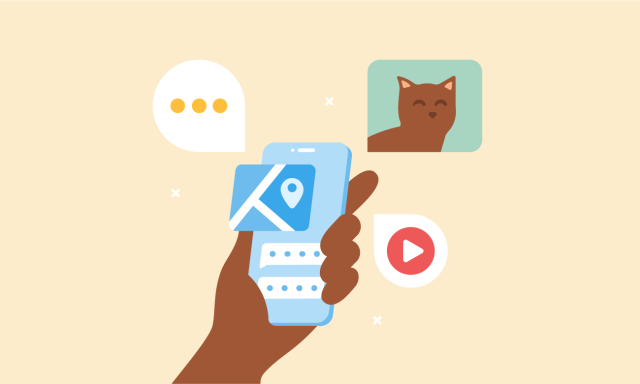In this article:
We're moving into the age of relevance. Find out what Matt Ramerman, President of Sinch Engage, had to say on how the era of loyalty marketing is coming to a close in this article originally featured on Target Marketing.
According to a recent Harvard Business Review article, the loyalty era of marketing is over. The opinion piece, penned by three senior Accenture executives, explores marketing as sequential trends that supersede each other.
The authors believe we are now moving into a new era of relevance. Briefly, each era is characterized as follows:
- Mass Market (60s/70s) The era of mass production, scale, and distribution.
- Segmentation (80s) More sophisticated consumer research enabled marketers to target customers in niche segments.
- Customer-Level (90/2000s) Tech advances in Enterprise IT made it possible to target individuals under the watchword customer lifetime value.
- Loyalty (2010s) The age of CRM, tailored incentives, and advanced retention.
Obviously, it’s technology in each of these phases that is the catalyst for change. The mass-market era of Coca-Cola and McDonald’s was made possible by cars, freeways, and the TV set for spot advertising. Equally, the loyalty era, with poster boys like Amazon, was brought into being by sophisticated CRM systems.
Now, we’re moving into an era of relevance — mass communication to the previously unattainable segment of one. New data techniques are increasingly being brought into play that exploit both explicit data — what is known about a customer (name, previous purchases, or contract type — in the case of wireless operators) and implicit data — information that can be inferred by behavior.
Data used this way allows marketers to address individuals by name, based on their unique preferences, while — increasingly — the interaction happens via mobile messaging.
There’s evidence relevancy is taking hold. According to the latest survey from sales analytics firm, Periscope By McKinsey, personalized messaging triggers action — 31% of consumers are prompted to respond to messages about products relating to their interests; in particular, updates relating to product availability and price.
So why are so many enterprises getting loyalty wrong? To frame the question further, in the prior loyalty era, the goal was to bring customers to a brand by providing a reward of some sort, a discount offer, or a fremium service. This currency was brand goodwill, which created a relationship with consumers that kept them coming back.
Yet consumers don’t actually display loyalty based on these incentives anymore. Rather, they seek out the best deal for themselves in the moment of need. Enabled by the digitization of everything and the proliferation of smartphones, spontaneity is the norm.
And with a market that is flooded with offers and discounts, who can blame them? Loyalty may be created for the briefest amount of time, with a customer shopping at your store one day, but expect them to switch to a competitor the following week, because a different offer appeals. For enterprises, this ultimately becomes a race to the bottom, undercutting competition and eroding profits, while the goodwill (loyalty) dissipates as quickly as it was created.
A common mistake is that brands and enterprises use loyalty as a short-term tactic, rather than as a strategic aim. Loyalty is of course important, but it’s the mechanics of any given program that needs to change. This means scrutinizing the customer journey and identifying opportunities to offer amazing experiences that directly speak to individual customer preferences at appropriate moments of interaction, and not just at the top of the sales funnel.
These might include:
- Before a Purchase — an offer based on something like cart abandonment behavior. A personalized message might showcase that garment (as a static image or in video format) and provide a link so that the customer can find their nearest store or an option to purchase it directly online.
- After a Purchase — Onboarding a new customer who has recently signed up for a service, for example. The objective might be a warm welcome, an acknowledgment of what a particular customer has signed up for, and some orientation around next steps.
- As Part of Ongoing Customer Experience — dynamic rich messages that augment the known metadata with third-party data, adding an additional layer of utility. A personalized notification from an airline, for example, based on a customer’s flight information that adds weather forecasts of the destination location.
In other words, creating relevancy goes much further than just offering personalized rewards, blending the customer experience with a range of other aims like product awareness onboarding and upselling.
Importantly, the more the interaction is helpful to the consumer, the more it has the potential to create loyalty. Gartner calls this “tailored help” and 88% of participants in its recent consumer survey reported not receiving it; yet, according to the firm, using tailored help in the form of mobile messaging increases commercial benefits (brand intent, purchase, repurchase, and increased cart size) by 20%.
What's more is the mobile channel is evolving. Where once enterprises had a few lines of text in an SMS, or video via MMS to interact on the mobile, now new, richer channels like RCS messaging and WhatsApp Business are giving enterprises the opportunity to add maps, barcodes, linked buttons, and more besides.
The era of relevance is becoming established. The price to pay for any brand that doesn’t get on board? Irrelevance.
Article first appeared on Targeting Marketing.



